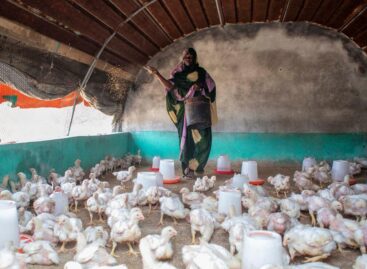FAO: Wheat and meat push FAO Food Price Index higher in June
Global food commodity prices rose in June, led by wheat and meat prices.
The FAO Food Price Index, a monthly trade-weighted index tracking international market prices of five major food commodity groups, released today, averaged 175.2 points in June, up 1.4 percent from May and 7.0 percent from a year earlier.
The FAO Cereal Price Index rose by 4.2 percent in the month, amid surging prices of high-protein wheat due to deteriorating crop conditions in the United States of America. Maize prices, by contrast, declined amid record harvests in South America.
FAO’s price indices for meat and dairy products also rose, while those for vegetable oils and sugar dropped.
Cereal stocks on course to hit new record
Despite tightening supply conditions for high-protein wheat, global cereal supplies are likely to remain abundant in the coming year, according to FAO’s latest Cereal Supply and Demand Brief, also released today.
FAO revised down its June forecast for global wheat output in 2017, while raising those of maize and rice. Global cereal production this year is likely to total 2 593 million tonnes, some 0.6 percent below that of 2016.
World cereal stocks are expected to expand further to a new record high of around 704 million tonnes.
Global food commodity prices rose in June, led by wheat and meat prices. The FAO Food Price Index, a monthly trade-weighted index tracking international market prices of five major food commodity groups, released today, averaged 175.2 points in June, up 1.4 percent from May and 7.0 percent from a year earlier. The FAO Cereal Price Index rose by 4.2 percent in the month, amid surging prices of high-protein wheat due to deteriorating crop conditions in the United States of America. Maize prices, by contrast, declined amid record harvests in South America. FAO’s price indices for meat and dairy products also rose, while those for vegetable oils and sugar dropped. Cereal stocks on course to hit new record Despite tightening supply conditions for high-protein wheat, global cereal supplies are likely to remain abundant in the coming year, according to FAO’s latest Cereal Supply and Demand Brief, also released today. FAO revised down its June forecast for global wheat output in 2017, while raising those of maize and rice. Global cereal production this year is likely to total 2 593 million tonnes, some 0.6 percent below that of 2016. World cereal stocks are expected to expand further to a new record high of around 704 million tonnes.
Related news
FAO: International food prices have been declining since September
🎧 Hallgasd a cikket: Lejátszás Szünet Folytatás Leállítás Nyelv: Auto…
Read more >FAO-Ministry of Agriculture Scholarship Program Continues
🎧 Hallgasd a cikket: Lejátszás Szünet Folytatás Leállítás Nyelv: Auto…
Read more >FAO: 2026 is the International Year of Rangelands and Pastoralists
🎧 Hallgasd a cikket: Lejátszás Szünet Folytatás Leállítás Nyelv: Auto…
Read more >Related news
New Year’s Eve: shortened opening hours in stores – general store closure on January 1
🎧 Hallgasd a cikket: Lejátszás Szünet Folytatás Leállítás Nyelv: Auto…
Read more >Tejföl is only a name for live flora: new categories for sour dairy products will be introduced from 2026
🎧 Hallgasd a cikket: Lejátszás Szünet Folytatás Leállítás Nyelv: Auto…
Read more >Sausage prices before New Year’s Eve: cheap entry, expensive premium – how big is the gap on the shelves?
🎧 Hallgasd a cikket: Lejátszás Szünet Folytatás Leállítás Nyelv: Auto…
Read more >






